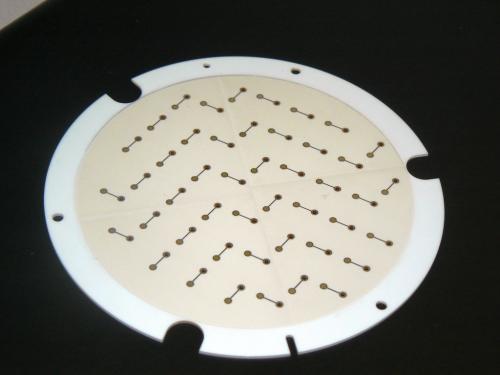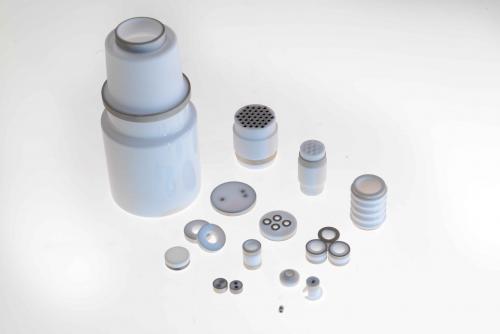General principle
Advanced ceramics are metallised for two reasons:
- The ceramic is an electrical insulator and needs to have conductor tracks added to it or component transfer areas, isolated from each other.
- To create a ceramic-to-metal bond as welding is almost impossible between the ceramic and the metal without adding a metallic interface.
Detailed description
Two types of metallisation to create a ceramic-to-metal bond are mainly used:
- High temperature refractory metallisation - MoMn & WMn. The ink is deposited in different ways: by brush, manual or automatic screen printing. This type of metallisation is then sintered under a controlled atmosphere.
-
The Ti-based active biocompatible metallisation is deposited either using a brush or by PVD spraying.
Surface protection can be applied using electrolytic, chemical, PVD or CVD procedures: nickel (Ni) with diffusion (thermal cycling under a controlled atmosphere), Copper (Cu), Gold (Au), Silver (Ag), TiN,TiO2, ...
The PVD vacuum deposits make it possible to obtain conductive layers of gold (Au), copper (Cu) or silver (Ag) several microns thick, creating the microelectronic circuits obtained by photolithography or 3D laser ablation.
Materials involved
Only alumina can be metallised at high temperature with MoMn or WMN inks. By contrast, thin PVD layers can be deposited on almost all advanced ceramics, but it is mainly alumina, zirconia, aluminium nitride, sapphire, and ruby that are involved.
Advantages and disadvantages of this process
- Creation of a conductor or transfer range on a delimited area
- Enables hermetic, very resistant, biocompatible ceramic-to-metal brazing
- Additional operation at significant cost
- The composition of refractory metallisation ink must be adapted to each type of alumina

